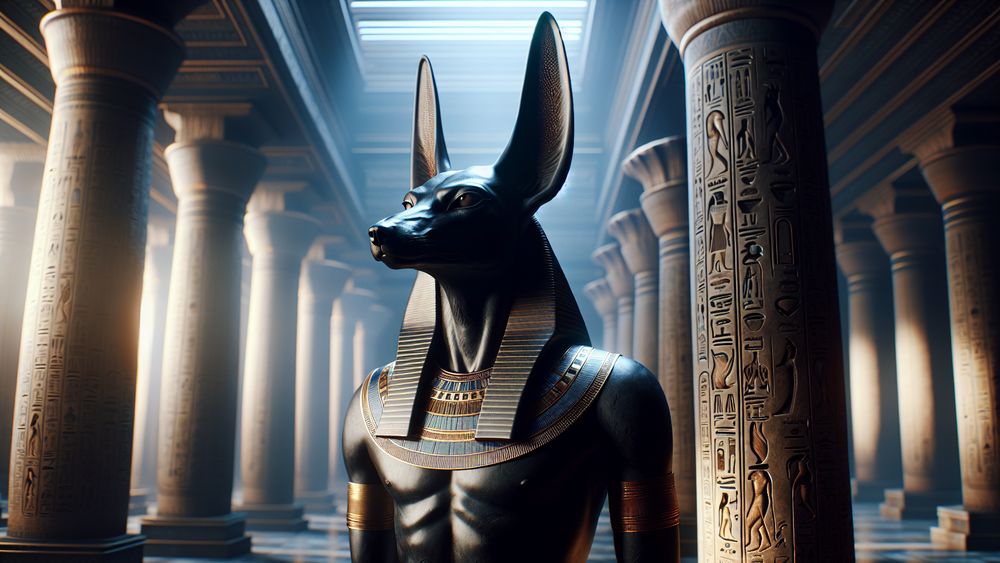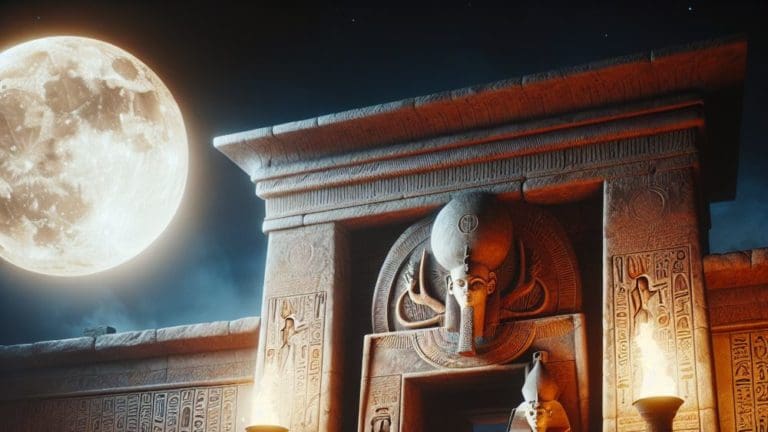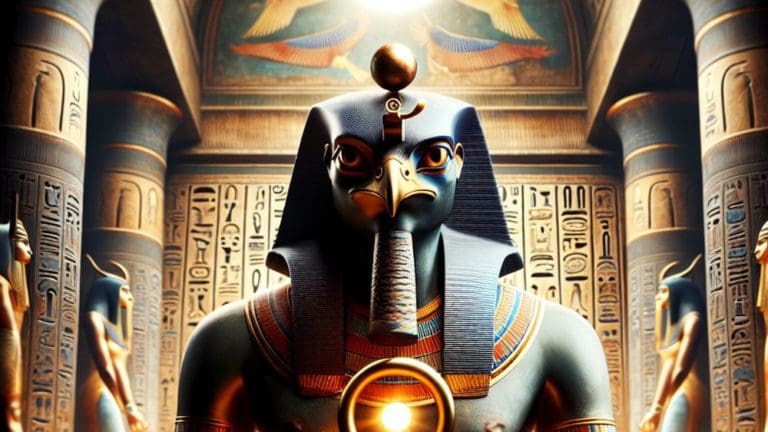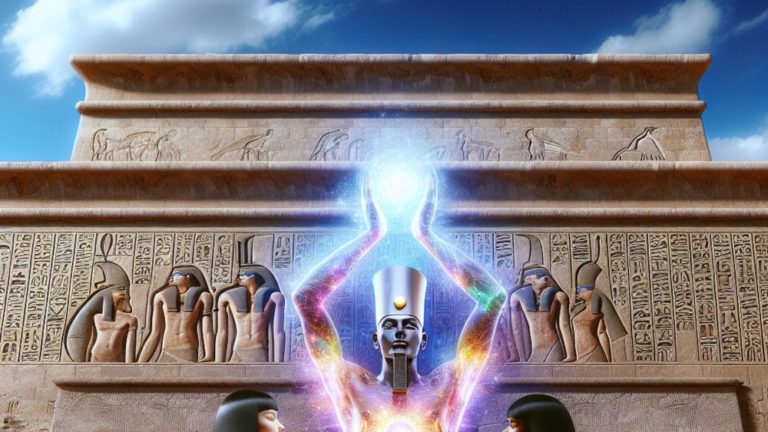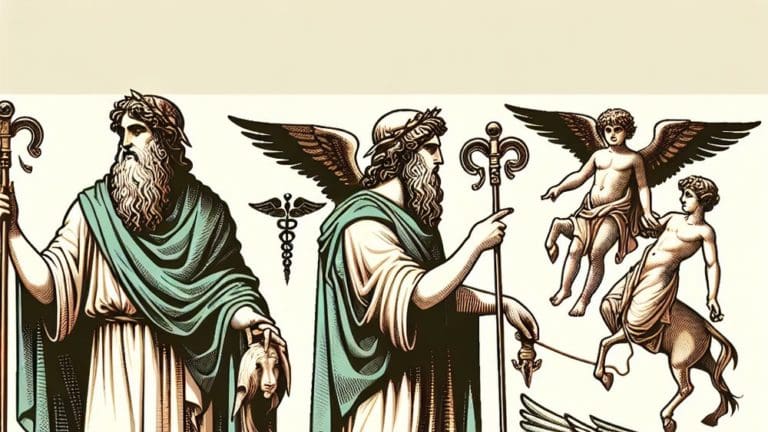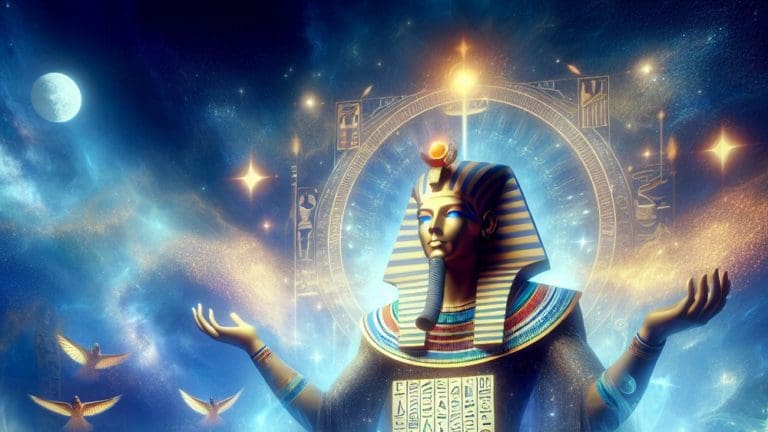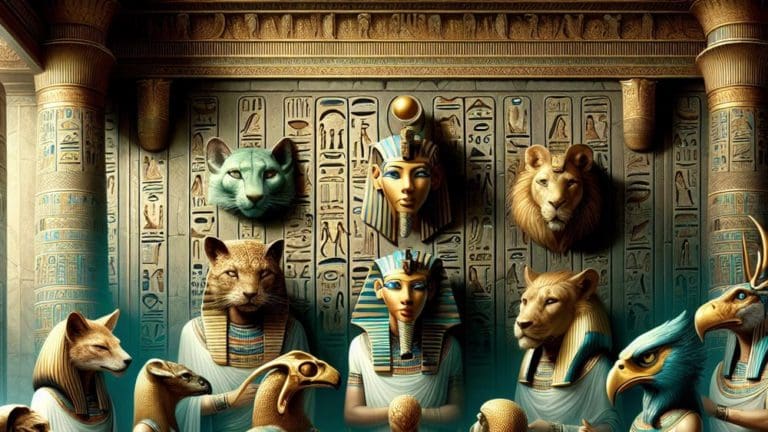Anubis: Egyptian God Of Death And Afterlife Guide
So, we’ve got this jackal-headed guy, Anubis, right? He’s pretty much the ancient Egyptians’ go-to when it comes to death and afterlife matters. Picture this: a deity that looks after graves and walks souls through to whatever comes next. Anubis isn’t a newcomer. Nope, he’s been around since the very start of Egyptian times, which tells you how key he was for them.
Key Points:
- Anubis is the Egyptian god of death and afterlife, often represented with a jackal head.
- Anubis guides souls to the afterlife and ensures they are prepared for the next stage.
- Anubis plays a crucial role in the mummification process to preserve bodies for the afterlife.
- Ancient Egyptians had temples and rituals dedicated to honoring and worship Anubis.
- Anubis’ influence can be seen in modern popular culture through movies, books, and video games.
- Anubis’ significance in Egyptian mythology lies in his role as a guide and protector for the dead.
- Anubis’ image and story have evolved over time, remaining relevant and impactful in modern times.
They saw jackals hanging around cemeteries and thought, “Yep, that’s our man for the afterlife job.” Diving into Anubis’ world, we get why death and what follows were so huge for those folks. They had this whole system, with Anubis smack in the middle, making sure everything ran smooth for the dead. It’s a trip into how one god laid down the law for the afterlife and kept the dead safe.
Who is Anubis?
When we take a closer look at the ancient Egyptian gods, Anubis really stands out. He’s all about the afterlife and what comes after we say goodbye to this world. Now, let’s take a walk and get to know this guardian of the afterlife a bit better.
The Role and Symbolism of Anubis in Ancient Egypt
So, Anubis steps into the spotlight as the god of death and afterlife. Picture him with a jackal’s head. Why a jackal, though? It’s because these creatures roam the deserts and guard the places where Egyptians bury their dead. Anubis, in his role, does something super crucial. He guides souls. Imagine him as the one who walks you from this world to the next.
He’s got this job where he weighs your heart against a feather to see if you’re worthy of moving on. That’s a pretty big job, right?
- Anubis and mummification go hand in hand. He’s all about making sure that when someone dies, they’re ready for what comes next.
- He’s the guy with the scales during the Weigh of the Heart. This is when it gets real if your heart is heavy with bad deeds.
- You’ll often see him hanging around tombs and graves. It’s his way of saying, “I’ve got your back,” to those who’ve passed on.
- His presence in all those funerary rites and ceremonies? It’s a sign of how much respect the Egyptians have for the afterlife.
Anubis isn’t your everyday deity. His job is to make sure that when it’s your time, you’re good to go for what comes after this life. And that’s something that mattered a lot to the people of ancient Egypt.
Anubis, the god of death and afterlife, plays a crucial role in guiding souls and determining their worthiness for the afterlife through the Weigh of the Heart ceremony.
Anubis’ Name and Its Significance
So, let’s talk about Anubis and what his name means. It starts with “Inpu,” which is an old way of saying his name in Egyptian. People also called him “Anpu” and the Greeks went for “Anubis.” This name probably comes from a word that means “to rot,” which makes sense since he’s all about death and afterlife duties.
Over time, folks gave Anubis lots of titles that showed off the different jobs he had. Like, back in the day during the Old Kingdom, they called him “He Who is Upon His Mountain.” That title was about him watching over graveyards.
Later on, he got a new title, “Lord of the Sacred Land,” which meant he was in charge of all burial spots in Egypt. This change in names and titles over the years really shines a light on how people’s view of Anubis evolved.
He went from being seen as a local embalming expert to getting recognized as a major player in the afterlife and a protector for those who’ve passed away.
Anubis in Ancient Egyptian Religion
So, we’ve chatted about who Anubis is and why he’s a big name. Now, let’s jump into the heart of ancient Egyptian religion where his stories and rituals really shine.
The Mythology and Legends Surround Anubis
So, we’ve got this god, Anubis, right? He’s all about guiding folks after they die and making sure they’re all set for what comes next. Born from a bit of a tricky situation, his mom Nephthys got together with Osiris while pretending to be Isis, which is how Anubis entered the scene.
This mix-up kind of set the stage for Anubis to become the go-to guy for afterlife affairs. He’s famous for wrapping up Osiris real nice after Osiris had a rough time with his brother Set. This was the first mummy ever, which is a pretty big claim to fame in ancient Egypt.
Aside from being the original embalmer, Anubis had his hands full with quite a few stories where he’s the hero. He’s got this knack for keeping chaos at bay, especially when Set tries to stir up trouble. Then there’s this epic tale where he’s judging and protecting all at once, which really cements his rep as a guardian for both the living and the dead. His job list is pretty long:
- Jackals and Anubis have a thing because jackals hang around cemeteries which made people think Anubis was watching over the graves.
- During the “Opening of the Mouth” ceremony, which was super crucial for the dead to enjoy their afterlife fully, priests would wear Anubis masks which is quite the tribute.
- Even though Osiris later took over as the main afterlife guy, Anubis didn’t really mind and kept on with his duties which mainly involved making sure the dead were ready for their next adventure.
- You can spot Anubis either chilling in full jackal mode or as a dude with a jackal head which is his way of saying he’s got the afterlife covered.
- The whole weigh your heart against a feather gig in the afterlife? That’s Anubis’ department, which is a pretty serious job when you think about it since it decides if you get to kick back in the afterlife or if you’ve got some issues to sort out.
Anubis and the Process of Mummification
In the heart of ancient Egypt, Anubis plays a key role. He watches over the mummification process. This is no small job. It’s about making sure that when someone dies, they’re ready for what comes next. The afterlife is a big part of Egyptian belief. They think you need your body in tip-top condition for that eternal life. So, they call on Anubis.
With a head like a jackal, he’s easy to spot. He’s the go-to guy for protecting graves and guiding souls. Mummification? It’s a fancy way to keep a body for a very long time. Anubis is said to have started this. He knew the tricks to stop bodies from decaying. This was crucial for the Egyptians.
They thought your spirit and personality needed to find and recognize your body after death. Without mummification, that reunion might never happen. So, what does this process look like? It’s quite the procedure and every single part matters.
| Step | Description | Significance |
|---|---|---|
| 1. Purification | They wash the body with special wine and Nile water. | It’s all about making clean and new again. |
| 2. Removal of Organs | Most organs get taken out and kept safe elsewhere. The heart stays put though. | Keeping decay away and making sure the heart is there for afterlife judging. |
| 3. Dehydration | They cover and fill the body with natron for 40 days to dry it out. | Stops the body from breaking down and gets it ready for the next steps. |
| 4. Wrapping | The body gets wrapped in linen while they tuck amulets in for protection. | Linen and amulets are for safeguard and starting anew; purity is key here. |
| 5. Final Rites | They perform a ceremony to make sure the deceased can use their senses after death. | This lets the dead breathe, eat, and talk in the afterlife; it’s essential for coming back to life. |
This table breaks down how each stage is soaked in meaning and aimed at getting someone ready for forever.
Anubis plays a crucial role in Egyptian afterlife beliefs and practices, overseeing the mummification process to prepare individuals for eternity.
The Worship and Cult of Anubis
So, we’ve been talking about how Anubis plays a huge part in guiding souls and all that jazz with mummification. Now, let’s shift gears a bit and get into how people back then showed their love and respect for him. They didn’t simply talk about Anubis; they went all out in showcasing their devotion.
Temples and Centers of Worship
In places where people showed their love for Anubis, Cynopolis and the Memphis necropolis stood out. Think of Cynopolis as a city that literally means “City of the Dog.” It’s where dogs and jackals, which were super special to Anubis, roamed freely and were part of everyday life.
This place and the necropolis at Memphis had huge temples and tombs that were all about honoring Anubis. They were built to be as grand as possible, making it clear how much the ancient Egyptians respected him and his role in guiding souls after death. These worship spots were designed with rituals and ceremonies in mind.
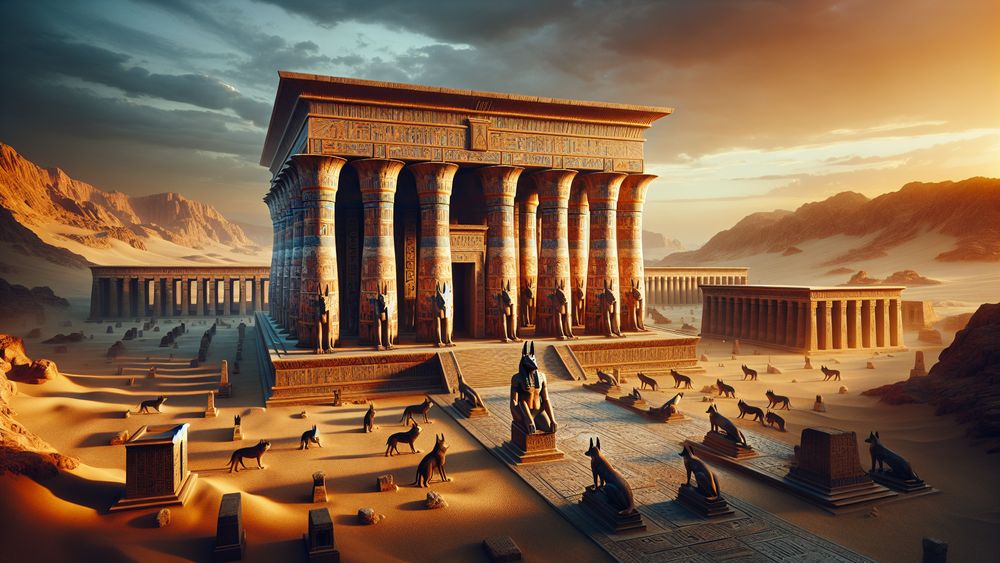
They had everything needed for honoring Anubis right. For example, the Memphis area was filled with tombs and places for the dead that lined up perfectly with what people back then thought about the afterlife and Anubis’ job in it. The way these places were built and what they contained help us understand so much about how people back then connected with Anubis and what they thought about life after death.
It’s like these buildings and artifacts give us a direct line to ancient Egyptian beliefs and practices, which is pretty amazing when you think about it.
Festivals and Rituals Dedicated to Anubis
When it comes to honoring Anubis, ancient Egyptians didn’t play around. They had this whole array of festivals and rituals that really showed how much they valued him, especially when you think about his job as the afterlife’s VIP guide. Take the “Feast of Anubis,” for example. This wasn’t your average get-together.
It happened when the Nile started to shrink back, which was a pretty big moment for them. It was all about endings and beginnings, which is pretty much Anubis’s whole thing. So, what went down during this feast? Well, for starters, people got together for big processions. They carried symbols that screamed “Anubis” to make sure he knew they were celebrating him.
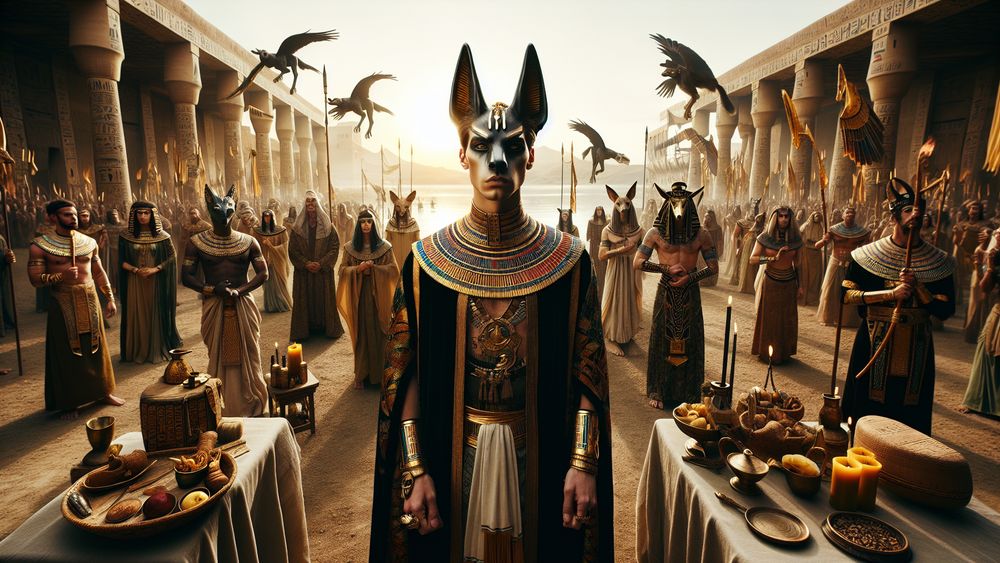
Then, they made offerings. We’re talking food, goods, and probably anything they thought could come in handy in the afterlife. It wasn’t enough to simply give these offerings; they also did rituals that mimicked embalming and buryals.
Imagine that, acting out the very practices that Anubis was boss of, probably hoping he’d give their loved ones a thumbs-up into the afterlife. And it wasn’t all so serious and somber. They had chants and prayers, sure, but it was also about feeling that connection to Anubis, making it a community thing where everyone felt a bit closer to the afterlife in a good way.
Plus, wearing amulets and talismans wasn’t unusual. These weren’t your everyday accessories but powerful symbols meant to keep you safe, especially if they had something to do with Anubis.
- Processions where participants carried symbols of Anubis.
- Offerings of food and goods for the afterlife.
- Rituals that looked a lot like mummification and burial.
- Prayers and chants for Anubis’s guidance.
- Amulets and talismans for protection, often with Anubis’s name.
So yeah, when it came to celebrating Anubis, ancient Egyptians really knew how to throw a party that mattered.
Ancient Egyptians had elaborate festivals and rituals to honor Anubis, including processions, offerings, rituals resembling mummification, prayers for guidance, and wearing protective talismans, making their celebrations truly meaningful and impactful.
Anubis Beyond Ancient Egypt
Leaving behind the ancient world where stories and legends of Anubis were born, we now enter a space where his story takes on new life.
Anubis in Popular Culture
So, Anubis steps out from the ancient sands and into our modern tales. Movies, books, and video games? He’s there. Take “The Mummy” movies. Here, Anubis guards the afterlife with a mix of awe and mystery. Then, there’s “Smite,” a game where he jumps into the fray, powers blazing. And let’s talk about Neil Gaiman’s “American Gods.” Anubis? He runs a funeral parlor.
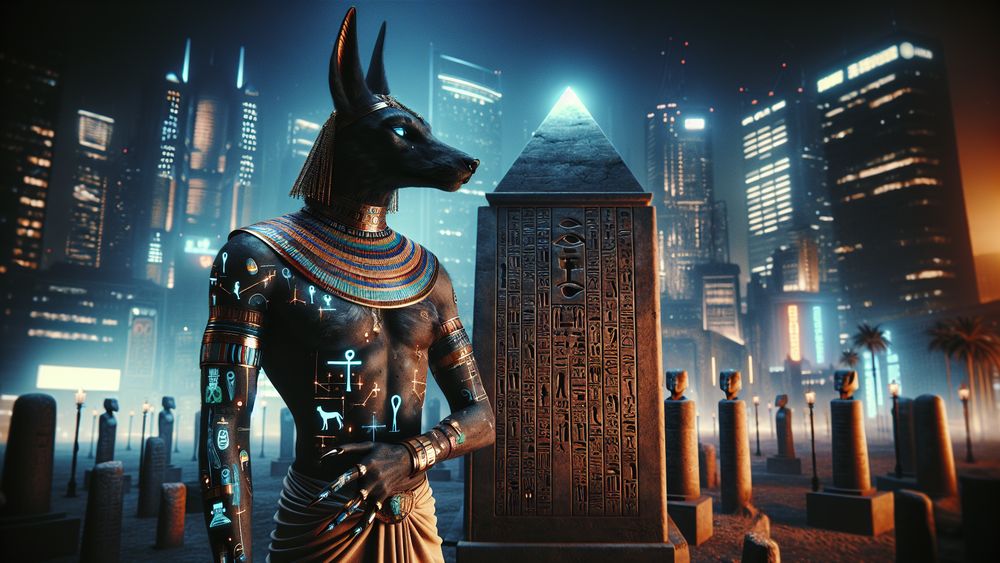
It’s a clever nod to his past job but with a modern twist. These stories bring him to life for us today. They keep him walking and talking in our world, though they sometimes stretch who he was in the old days. Yet, this is how Anubis stays relevant and remembered. It’s simple but true.
While these spins may play fast and loose with the facts, they bind us to this iconic figure from history.
Pantheon of All the Egyptian Mythology Gods
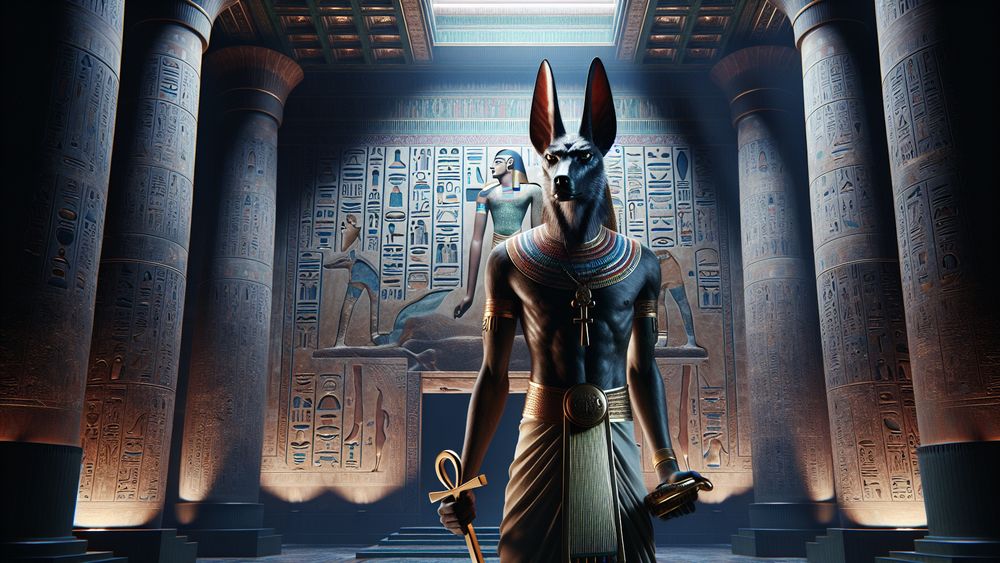
So, when we talk about Egyptian mythology, it’s like opening a giant book filled with stories of gods and goddesses who pretty much had a job for everything. Imagine a world where there’s a specific person you call for anything you need – that’s how it was with these deities. You’ve got Ra, who’s basically the CEO of the sun and all gods.
Then there’s Isis, who knows all about magic and taking care of kids. And don’t forget Osiris, who’s in charge when it comes to what happens after we say goodbye to this world. But that’s barely scratching the surface. There are gods for love, for writing, for music – you name it. Each one has their own story, their own personality, and their own followers.
Diving into this pantheon is like getting lost in the most epic family tree you can imagine, where every branch tells a tale of power, adventure, and sometimes, a bit of drama. For those who really want to get into the nitty-gritty and meet every member of this divine family, checking out a detailed list of all the Egyptian gods can be quite the adventure.
FAQs
1. How did Anubis become the god of death and afterlife?
Anubis steps into the role of death and afterlife’s god because he’s all about mummification and embalming. These practices are key for anyone looking to make it to the afterlife in ancient Egypt. Myths play their part too. They show him as a guide and protector for those who’ve passed away. This is how he nails down his job as the go-to deity for afterlife matters.
2. What are the most famous myths involving Anubis?
In the heart of ancient tales, Anubis takes center stage. He’s there when Osiris needs him most, wrapping and protecting for eternity. This god also stands tall in the afterlife, weighing hearts with a feather’s balance. These stories aren’t mere tales; they’re the pillars of what the Egyptians held sacred. Anubis, in his might, guides and judges, a beacon for souls navigating the afterlife’s mysteries.
3. Can you visit any temples dedicated to Anubis today?
When it comes to checking out temples for Anubis in the here and now, it’s a bit of a mixed bag. You won’t find a spot where Anubis gets the solo spotlight, ready for visitors to walk through its ancient doors. Yet, that doesn’t mean all is lost. Museums and archaeological digs across Egypt are where it’s at. They house pieces and parts that once sang praises to Anubis.
4. How has Anubis’ image evolved in modern times?
Nowadays, Anubis takes on new roles in movies, books, and video games. He’s more than an ancient deity. His look and story get a fresh twist while keeping a toe in history. It’s like he walks through time, picking up new fans and changing outfits. This shift makes him a standout figure, far from his origins yet still linked. He’s everywhere, from serious documentaries to fun cartoons.

